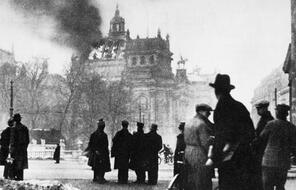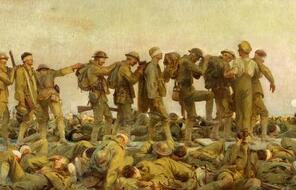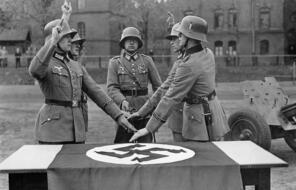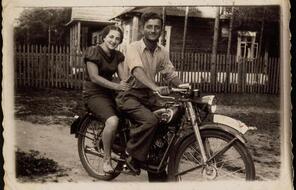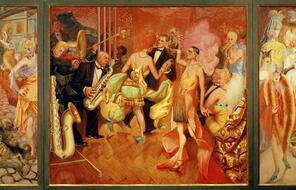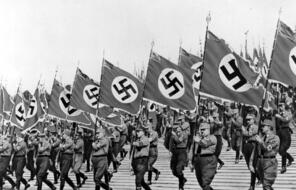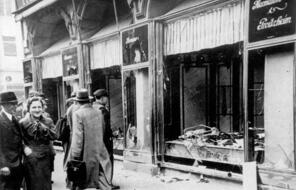Voices from the Warsaw Ghetto
Introduction to the Jewish Partisans
In ghettos, the struggle simply to avoid death could be all-consuming. Yet even as Jews labored to find food, fend off sickness, and avoid deportation, many also sought ways to defy their German overlords. Some residents took great risks to smuggle food, supplies, and information into ghettos; some attempted to sabotage production at their slave-labor factory jobs. Others, especially younger people and those without children, were able to escape from ghettos; some went into hiding and others found ways to join armed resistance groups, known as “partisans,” that were active in eastern Europe beginning in 1941. Jews organized armed resistance in over 100 ghettos—most famously in the Warsaw ghetto uprising in 1943.
In the degrading, dehumanizing system of the ghettos, the struggle to maintain a sense of identity, dignity, faith, and culture was also a form of defiance, known today as “spiritual resistance.” In many ghettos, Jews organized secret schools, prayed and observed religious holidays, participated in clubs and cultural life, and worked with organizations set up to help others in the ghetto.
In the Warsaw ghetto, from 1940 to 1943, a group called Oyneg Shabes (meaning “joy of the Sabbath” in Yiddish, a reference to the group’s practice of meeting on Saturdays) conducted research and secretly assembled an archive that documented both Nazi crimes and also residents’ brave efforts to maintain life in the face of death. Gustawa Jarecka, a member of Oyneg Shabes, wrote: “The record must be hurled like a stone under history’s wheel in order to stop it. . . . One can lose all hopes except the one—that the suffering and destruction of this war will make sense when they are looked at from a distant, historical perspective.” 1 Under the leadership of historian Emanuel Ringelblum, the group gathered writings, assembled statistics, and collected artwork, photographs, and objects of daily life, over 35,000 pages in all. Historian Peter N. Miller describes the archive:
We find samples from the underground press, documents, drawings, candy wrappers, tram tickets, ration cards, theater posters, invitations to concerts and lectures. The archive preserves copies of complex doorbell codes for apartments housing dozens of tenants, and also restaurant menus advertising roast goose and fine wines. There were hundreds of postcards from Jews in the provinces about to be deported into the unknown, and there was the ghetto poetry of Wadysaw Szlengel and Yitzhak Katznelson. There is the entire script of a popular ghetto comedy called “Love Looks for an Apartment.” There are long essays on ghetto theaters and cafes alongside school primers and reports from orphanages. The first cache of tin boxes also contained photographs, seventy-six of which survived, showing street scenes, starving children, Jewish police, the building of the walls, smugglers throwing sacks of flour over the walls, people listening to loudspeakers in the street, and so on. Last inserted were German posters announcing the deportation . . .
In the Oyneg Shabes Archive, the individual remains intact and central, unobscured and unvarnished. This is a record of human beings, with human voices, in an inhuman existence. There are many essays in the archive written by parents memorializing their dead children. What on this earth could be more personal than that? 2
Collected in tin boxes and aluminum milk crates, the documents were buried secretly in the ghetto in 1942 and 1943, in three places known only to a few people. Miller describes the burial of the first set of documents:
On August 3, 1942, with the Germans only a block away from the building at 68 Nowolipki Street, under which he was to bury the first cache of the archive, Israel Lichtenstein hurriedly deposited his testament—and in that instant gained his eternity. “I do not ask for any thanks, for any memorial, for any praise. I only wish to be remembered. . . . I wish my wife to be remembered, Gele Sekstein. . . . I wish my little daughter to be remembered. Margalit is 20 months old today. . . . She too deserves to be remembered.” Working with him were two teenagers, David Graber and Nahum Grzywacz. They, too, left little reminders of themselves in the archive that they were burying. Grzywacz was eighteen years old, and when he heard that the Germans had blockaded his parents' building, he wrote, “I am going to run to my parents and see if they are all right. I don't know what's going to happen to me. Remember, my name is Nahum Grzywacz.” The emphasis is in the original. 3
Of approximately 60 people who worked with Oyneg Shabes, only three survived. After the war, they worked with other survivors to find the buried archives. Two sets of documents were uncovered, in 1946 and 1950. The third has never been found.
Connection Questions
- Why, in a time of such desperation and struggle, would the members of Oyneg Shabes devote precious energy and resources to creating an archive?
- What was the value of creating the archive for the members of Oyneg Shabes? What is the value of the archive for students and historians today?
- How might our understanding of the Holocaust be different if archives like that created by Oyneg Shabes had not been preserved?
- How would you describe “spiritual resistance”? In what sense was the work of Oyneg Shabes a form of resistance?
- 1Quoted in Samuel D. Kassow, Who Will Write Our History? Emanuel Ringelblum, the Warsaw Ghetto, and the Oyneg Shabes Archive (Bloomington: Indiana University Press, 2007), 7.
- 2Peter N. Miller, “What We Know About Murdered Peoples: A review of Samuel D. Kassow's book on the Warsaw Ghetto,” The New Republic, April 9, 2008, accessed April 27, 2016.
- 3Peter N. Miller, “What We Know About Murdered Peoples: A review of Samuel D. Kassow's book on the Warsaw Ghetto,” The New Republic, April 9, 2008, accessed April 27, 2016.
How to Cite This Reading
Facing History & Ourselves, “Voices from the Warsaw Ghetto”, last updated October 12, 2018.

